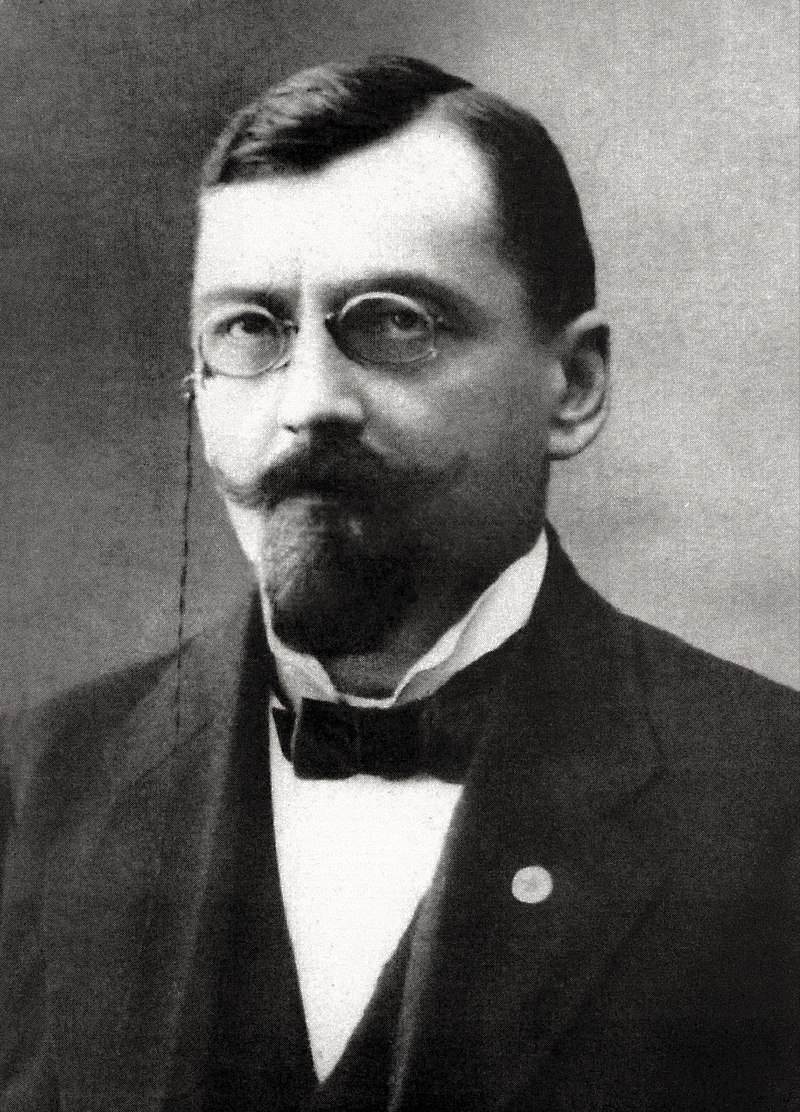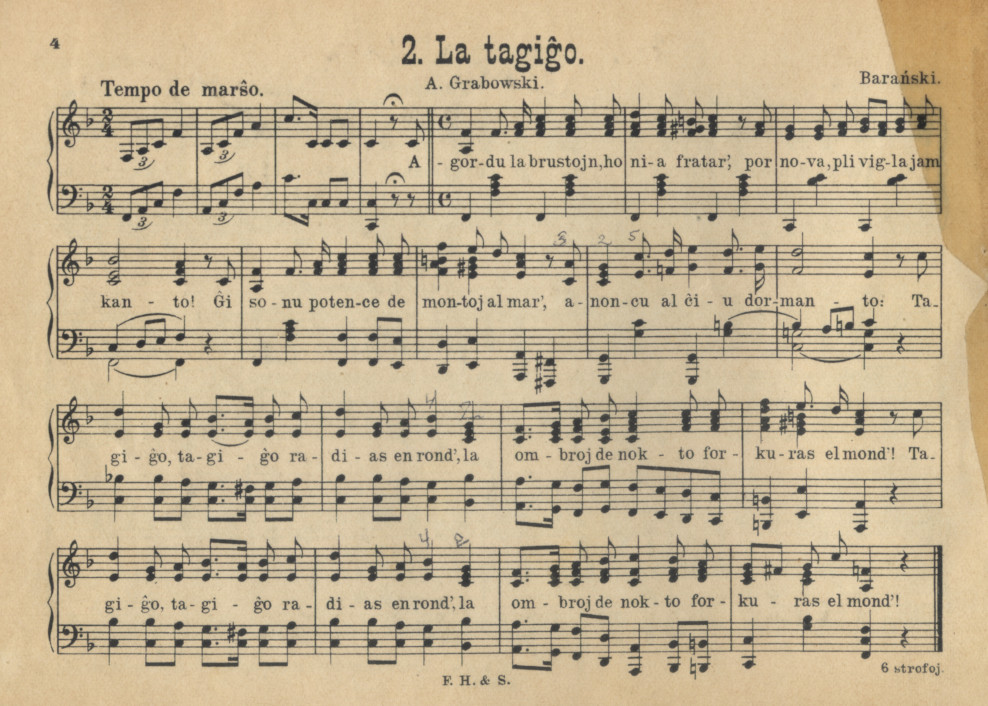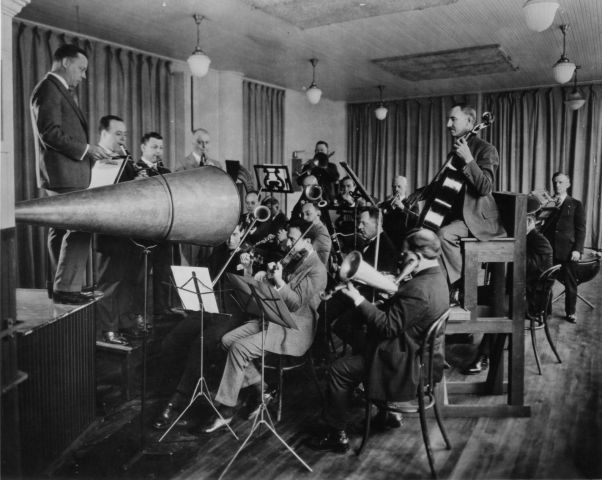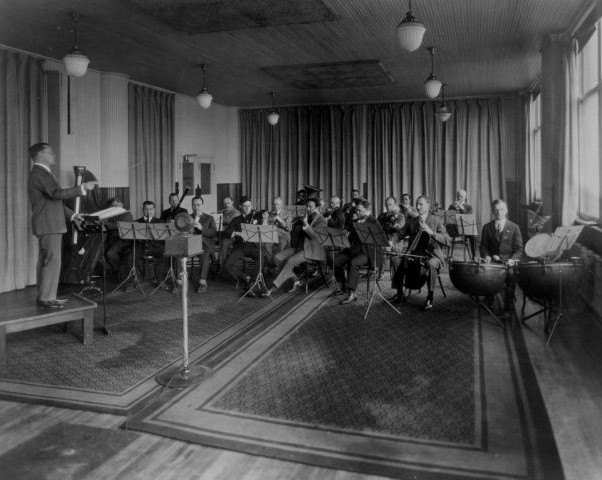Esperinst
In my first ever post on this site, I mentioned that it was difficult to find out any information about what the very earliest Esperanto record was, and so began my blog by writing about the earliest LP. Today I think I may have an answer to that question - at least, I have some more information about two of the earliest Esperanto records, and I strongly suspect that they were the very first ones.
I would like to thank my friend Heather Eason, organiser of the Cardiff Esperanto Group, who recently found a number of old Esperanto records in her attic and passed them on to me. They include a complete set of the 1920s Linguaphone Esperanto course records (fifteen records, each side corresponding to one of the 30 lessons in Linguaphone’s Esperanto course and containing the text of that lesson read by Edmond Privat), a few 45s which she described as “curiosities” (including the EAB Pronunciation Disc, a talk by Ivo Lapenna, and a flexi-disc of Teenage Esperanto New Basic Method), and the music 78 whose labels are shown below: Al la Fratoj / La Tagiĝo, sung by Maurits Boeren.

This record was produced in 1926, and so is old enough that it’s now in the public domain and can be freely reproduced. The following videos are of it being played on my HMV 102 portable gramophone, which dates from no earlier than 1931 and so is actually newer than the record. Unfortunately shellac records, unlike vinyl, aren’t archivally stable, and the material tends to degrade over time. This results in tiny cracks and imperfections throughout the record’s surface, which turn into a large amount of surface noise when the record is played back - and it seems that my microphone is particularly good at picking up surface noise. It sounds quite a bit clearer in person, but even in these videos you can at least hear the recording; the record would have sounded a lot better when it was new, but it is 97 years old now, and I doubt anyone involved in its production had any thought of it surviving that long!
Al la Fratoj
La Tagiĝo
The record was one of a set of two issued at the same time; the other contains two recordings of La Espero: one instrumental, performed by the band of the Honourable Artillery Company, and one vocal, sung by Gladys Cosmetto. I’ve not yet been able to track down a copy of this record - it’s one of the entries on my Wanted page - but the late YouTuber “EMGColonel” has uploaded a partial recording of both sides:
La Espero
The two records appear to have been issued as a set, and it’s likely that the original owner of this particular copy was Thomas E A Southern, then honorary secretary and treasurer of the Cardiff Esperanto Club. The marking of “BM/BAXK” on the label appears to fit with the style of library references used by the Club, and both records are referenced in an entry from the Club’s journal on Saturday 26th April, 1930:
“After assembling for tea at the Dormie Cafe as arranged, the meeting decided, owing to the small number present, to proceed to the home of the Honorary Secretary/Treasurer and invitation of him and his wife, instead of holding a more formal meeting at Charles Street. It was, thus, possible to talk and make use of the gramophone to hear La Espero and sing Esperanto songs and partake of lemonade and biscuits later, in a more sociable atmosphere. A rendition of La Tagiĝo, though small in number, was particularly rousing.”
The Club’s copy of the La Espero record has presumably been lost - or, more likely, accidentally broken - at some point since then. No doubt it would’ve been the more frequently played of the two records, and therefore the more likely one to have been dropped and shattered at some point.
The two records were published by The Esperanto Institute Ltd of Welwyn Garden City, UK, under the trade mark of Esperinst. Anyone who’s ever done any research of any kind will be familiar with the phenomenon of hitting brick walls on every line of enquiry, until you find the one keyword that unlocks a vast wave of information, and in this case for me it was the name “Esperinst”, as it turns out that the name was already known to collectors of obscure British 78s. From that starting point I was able to find out a fair bit of information about the production of these records, down to the dates of the recording sessions.
The founding of The Esperanto Institute Ltd was reported in the February 1926 issue of UEA’s journal Esperanto. The company apparently aimed to “accelerate the progress of Esperanto through its practical application and usage”, and its work included advertising, travel agency, publishing, and acting as an agent for the Linguaphone course. Clearly they started quickly, as the two records were recorded in July of that same year - but as the only other publication of theirs that I’ve been able to find is a commercial dictionary, also from 1926, it seems that they perhaps didn’t manage to last too long in business. The company’s files, which survived until 1967 at the British government’s Companies House, were unfortunately caught by a routine procedure for the destruction of long-defunct companies’ records.
The records were produced on the Institute’s behalf by the Crystalate Manufacturing Company. They claimed to be the first company to press disc records in the UK, and while they mostly concentrated on producing records to order for other labels, by the 1920s they were also running their own label, Imperial Records. They operated a studio in London and a huge record-pressing plant in Kent - and it is here that the Esperinst records were cut and pressed.
The name “Crystalate” comes form an early form of plastic manufactured by the company. While Wikipedia asserts that they used this plastic to manufacture records, this appears to be incorrect: every other source I’ve found states that their records were conventional shellac. Certainly the Esperinst records are shellac.
The Crystalate studio, being some years old by the time of the Esperinst recordings in 1926, was equipped for the original acoustic recording process. This involved the sound being captured by a large horn, which directly vibrated the cutting head - effectively the same as how an acoustic gramophone reproduces the sound, but in reverse. By 1926, many studios had upgraded to the new electrical recording process, which used a microphone and offered higher fidelity, but Crystalate was still using the old process.
These two photographs were taken at the Victor studio in New Jersey in 1925 only a few days apart. The first shows an acoustic recording session, and the second an electrical recording session only a few days later. The large horn on the left-hand side of the acoustic picture is connected directly to the cutting head, and the musicians have to be crowded around the horn to produce enough volume - the string players are using Stroh instruments, as conventional strings weren’t loud enough to be picked up. The electrical session shows a much more ordinary-looking arrangement of the band; the microphone is the box on a stand in the foreground. The experience of recording at Crystalate’s studio would have been much more like the first photograph than the second - especially for the band recording of La Espero.
Crystalate kept ledgers of their recording sessions, which have survived to the present day, and I am very grateful to Michael Thomas for looking up the Esperinst recordings for me. He reports that the Gladys Cosmetto recording (matrix number 4430) was recorded on 16 July 1926, and the two Maurits Boeren recordings (matrices 4431 and 4432) were recorded on the 26th of the same month. These matrix numbers fall in the middle of a series of records released on Crystalate’s Imperial record label, and were recorded at their London studio - a point confirmed by the mention of London on the labels of the records themselves. I am wondering whether there might be a transcription error in the ledger and that all three sides were actually recorded on the same day - it would seem strange to me that consecutive matrix numbers were recorded ten days apart, and it would probably make more financial sense for Esperinst to book a single session rather than two separate ones - but either way, the records were certainly cut in July 1926.
The existence of three matrices in this series was apparently a point of confusion for collectors researching Crystalate, as of course one would reasonably expect an even number of sides to be recorded. This is of course easily explained by the existence of the fourth side, recorded by the band of the Honourable Artillery Company - or perhaps I should say the first side, as it was recorded earlier, as part of a larger session of 6 titles with the HAC band on 6 June 1926.
The HAC is generally considered to be the second oldest extant military unit in the world, and the oldest in the British Army, having been incorporated by royal charter in 1537. The regiment’s band is one of the most well-known military bands in the UK, and frequently plays at state ceremonial occasions. While the choice of a military band to play what is essentially a pacifist anthem seems rather strange, it is difficult to deny that it is a suitable style of ensemble for the music - indeed, the rather martial nature of de Ménil’s melody was still a point of controversy among Esperanto speakers in the 1920s.

Clipping from the Daily News (8 December 1922) with details of that evening’s radio programme. Gladys Cosmetto is third on the bill for the 8pm concert.
Gladys Cosmetto, the singer on the vocal side of La Espero, appears to have been something of a star of the 1920s Esperanto movement, at least in the UK. Born in London in 1890, Gladys was the only child of Miltiades John Cosmetto, a Greek born in Constantinople, and his wife Annie, née Townsend. She married Henry Weston in 1916, but continued to be known as a musician under her maiden name, as was the convention for performers at the time. In Esperanto circles she was particularly known for founding the magazine Londona Rondiranto and translating a large number of songs. In December 1922, she performed the song “Ĝis” ("Until") on the nascent BBC’s London station 2LO - perhaps not the strangest item on that evening’s programme, as she came immediately after an item of card magic. Quite how that worked on the radio I’m not sure!
Maurits Boeren, the singer on the other record, appears to have been a reasonably prominent figure in the Belgian Esperanto movement around the same time. His marriage to Marguerite Lamboray was announced in the magazine Belga Esperantisto in July 1927, at which time he is stated to be a professor of Esperanto, committee member of the club Verda Stelo and vice-delegate for UEA in Antwerp. The same magazine also has a few later announcements about the births of at least two children, and in every case uses the French spelling of his name, Maurice. However, my searches for both Maurits and Maurice Boeren have brought up very little further information about him.
The repertoire presented on these records is typical of early Esperanto song, expressing the perceived importance of the international language and the desire to see it widely adopted as a universal second language - a sentiment that feels rather naive in modern times, even to most Esperanto speakers!
La Espero is of course familiar to all Esperanto speakers, as is the melody by Félicien de Ménil. Initially one of several competing settings of Zamenhof’s poem, de Ménil’s was published in 1909 and by the 1920s was accepted as the standard choice. Al la Fratoj is also a Zamenhof poem, set to music by Suda - although I haven’t been able to find out who that refers to. I’m also not sure how well known it was as a song, as opposed to a poem: I haven’t been able to find any sheet music for it, and even in modern sources it is simply listed as a Zamenhof poem. According to Zamenhof’s biographer Edmond Privat, “per tiu poemo, kvazaŭ tra kristalo travidebla, ni povas rigardi ĝis fundo de lia koro, kiel ĝi batis en vespera silento pensante al la vasta rondo familia” (Vivo de Zamenhof,

Antoni Grabowski
La Tagiĝo is the only text from this set of records that was not written by Zamenhof. It was also originally a poem, but by Antoni Grabowski, who was one of the earliest adopters of Esperanto and was known as “the father of Esperanto poetry”. La Tagiĝo was set to music by the Polish composer Baranski (again, about whom I can find very little information) and was certainly well known as a song to 1920s Esperanto speakers. The most popular collection of Esperanto songs from the period was Paul Bennemann’s Internacia Kantaro, consisting of well over a hundred translated folk songs from many countries and a dozen or so specific to the Esperanto movement. Such was the importance of La Tagiĝo that it is featured as the second song in the book; number one is, of course, La Espero.

Sheet music for La Tagiĝo from the Internacia Kantaro.
The August 1926 issue of The British Esperantist gives a report from that year’s Universala Kongreso, held in Edinburgh from 31st July to 7th August. An entry for Monday 2nd August describes the bookshop, with the following description of the Esperanto Institute’s stall:
“Next was the stand of The Esperanto Institute Ltd., with the Esperanto Travel Bureau, where knotty points as to Where to Go and How to Get There, were quickly solved. Here also was a useful English-Esperanto Commercial Dictionary for sixpence; also some newly-arrived Gramophone Discs with the music of La Espero, La Tagiĝo and Al La Fratoj were demonstrated and sold at the very reasonable price of 5/-.”
It’s hard to imagine these days that a recording made in the studio on the 26th of July could be pressed onto records and available for sale by the 2nd of August - and indeed when I enquired about this in a Facebook group for gramophone enthusiasts, the response was that such a turnaround would probably also have been unfeasible back in 1926. Yet this is apparently exactly what happened! Presumably the reason for the quick turnaround was the Universala Kongreso: it would have been infeasible for Maurits Boeren to stay in Britain much longer than an extra week before the Kongreso, but clearly the records would need to be ready in time to be put on sale there.
A typical Imperial record of the era
Perhaps the Institute paid extra for expedited production - certainly the price of the records would seem to suggest it. The record shown in this video is from Crystalate’s Imperial label in 1932, and the sleeve shows that it retailed for 1/3; apparently 1/6 was more typical in the 1920s, but even if we assume that Esperinst’s price of 5 shillings is for the set of two records, it still represents a very significant markup over equivalent mass-market records manufactured by the same plant!
I mentioned at the start of this article that I suspect the Esperinst records to be the very first Esperanto music records. They are certainly among the first; the Laŭjara katalogo de muzikaj diskoj en Esperanto, citing the 1931 Oficiala Jarlibro de la Esperanto-Movado, describes six Esperanto records that were available in that year:
- La Espero (Miss Cosmetto), 10 inch, Esperanto Institute, Welwyn Garden City, UK
- La Tagiĝo, 10 inch, Esperanto Institute, Welwyn Garden City, UK
- Samideana Trinkkanto, music by Schubert, 12 inch, Gregg Publishing Co, London, UK
- En la Drinkejo (Mich, Sarossy), 12 inch, His Master’s Voice, UK
- Esperanto-Serba Trinkkanto (M. Nešić), 12 inch, Polydor, Germany?
- La Espero, 10 inch, Ultraphon, Prague, Czechoslovakia
If there is an order to this list, it is either alphabetical by record label (which seems an odd choice, although admittedly I don’t know the context in which it was originally presented), or it is something else not shown - most probably chronological.
As The British Esperantist article quoted above referred to both the “newly-arrived” Esperinst records and, elsewhere on the same page, the Linguaphone records, it seems reasonable to assume that it would also have mentioned any other records that were available at the same time. As such, it seems likely to me that the other four records mentioned were released later, and that the Esperinst records were the very earliest Esperanto music records. Of course, this is mainly an argument from silence, and could easily be disproved by finding an earlier example - and if anyone can find such a thing, I would be absolutely fascinated to hear about it!
Update - Sat 8 Jul 2023: Andy Briggs has recently uploaded an excellent radio documentary on the history of Crystalate that he presented in 2002.
Discography
- La Espero (Honourable Artillery Company / Gladys Cosmetto; matrices 4400 and 4430)
- Al la Fratoj / La Tagiĝo (Maurits Boeren; matrices 4431 and 4432)
Sources
- Esperanto, February 1926, p 34 (14)
- The British Esperantist, August 1926, p 150
- Hillandale News, Issue 231 (Autumn 2000), Page 143
- Libera Folio, 18 June 2005: Grabowski - la patro de la esperanta poezio
- Michael Thomas - Record label index - E
- Honourable Artillery Company Band
- Gladys Cosmetto
- Enciklopedio de Esperanto (1934)
- Wikipedia
- The British Esperantist, July 1911, p 135 (“Highbury”)
- Islington Gazette, 14 January 1913, Page 4 (“Esperanto in Canonbury”)
- Daily News (London), 8 December 1922, Page 3 (“To-night’s Music by Wireless”)
- The British Esperantist, January 1923, p 18 (“Esperanto kaj Radio”)
- WikiTree
- Maurits Boeren
Comments
Comments are welcome in any language, especially Esperanto.
All comments are moderated before publication.
Komentoj estas bonvenoj en ĉiuj lingvoj, aparte en Esperanto.
Ĉiuj komentoj estos kontrolitaj antaŭ publikigo.

